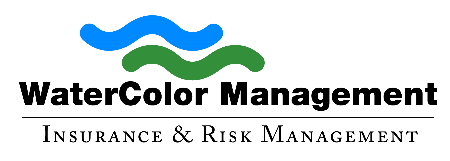
Insurance policies have something that is referred to as aggregates. This is most that the insurance policy has available for all claims. Usually the aggregate is a multiple of the per event or occurrence limit. Under our policy, the aggregate is three times the per event limit. We provide 1,000,000 per event subject to $3,000,000 total all events in a year. If you have three $1,000,000 claims inn the policy year you have exhausted the policy’s aggregate. If you have one $3,000,000 claim you have $2,000,000 aggregate left but you have $2,000,000 in unpaid liability.
Some agents believe that adding per location or per project aggregates for a nominal premium represents a sound risk management decision. Sometimes project owners require a separate aggregate for that project to make certain the entire policy limits are available for loss incurred at that site.
The problem with this approach is it is often thought of as additional limits. That is not the case. The limit remains the per occurrence or event limit. The only difference is the aggregate has been expanded. The reason aggregate per project is economical is because there is virtually no possibility the increase in aggregate can ever be reached. If you have a $1,000,000 limit and a $3,000,0000 policy aggregate, it is almost impossible to ever reach the $3,000,0000 aggregate. Making the aggregate specific to each project does not change much of anything because the limit remains 1,000,000 per loss subject to the new per project aggregate limit. If you are unlikely to reach the aggregate of $3,000,0000 in a policy how much far less likely are you to reach the aggregate of $3,000,000 aggregate per project?
Let’s say you are insured with us, and a project owner requires you to purchase a separate aggregate for his project. The charge is nominal and we issue the endorsement. You have a claim elsewhere that uses up $1,000,000 in coverage. If you did not have this endorsement the aggregate only at the project would be decreased by $1,000,000 from the claim. Since you do have a separate aggregate at this project the aggregate available remains unchanged. However, please note if you did not have the separate limit you still have two more occurrences of $1,000,000 that would have to happen before the aggregate at the project would be exhausted. A tsunami hitting Colorado is more likely from an actuarial viewpoint.
If you want more coverage, what you need to do is purchase more coverage, not more aggregate. If you have a project contract that requires a project aggregate then that is reason to add the endorsement and pay the nominal premium.
Increasing aggregate by using a per project limit instead of a policy aggregate limits does not increase the coverage available per claim. Only purchasing increased limits does this. Purchase higher limits if more coverage is desired. Use per project limits only when the project owner requires it by contract or agreement. If you want more coverage purchase higher limits. Never rely on aggregates to give you the coverage that you need.
About Watercolor Management
WaterColor Management has insured the water industry for over 30 years. Our policies include unlimited defense cost coverage in the event of a lawsuit against you. Call us at (256) 260-0412 or email info@watercolormanagement.com for a quick quote for your Water Business Professional, Products/Completed operations, Pollution and General Liability Insurance.




